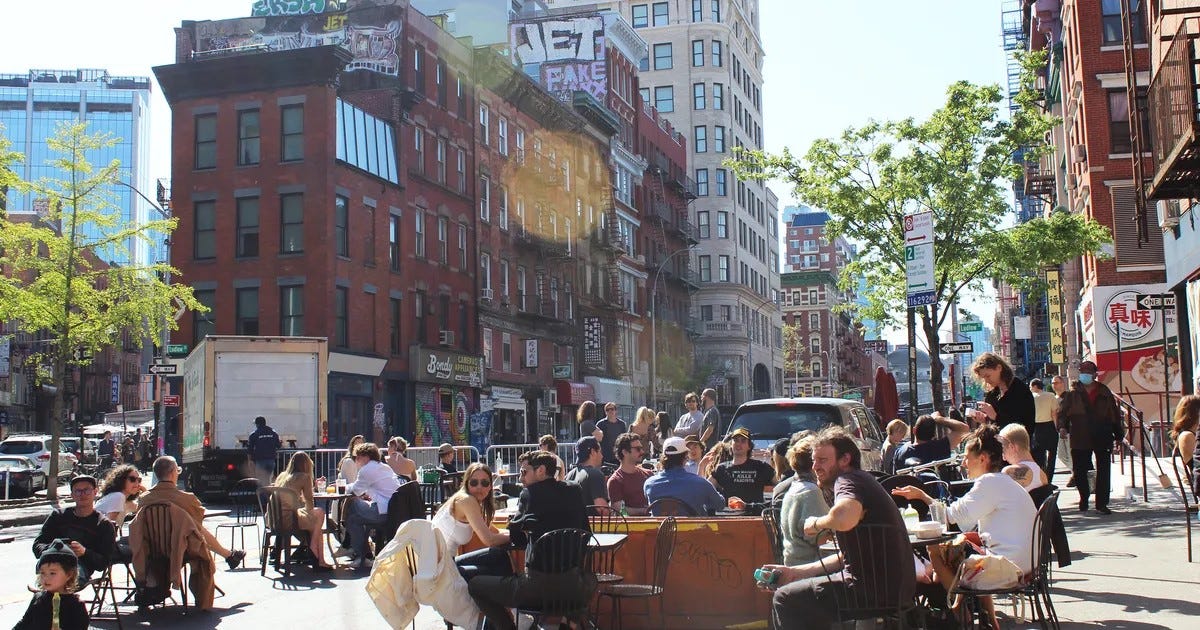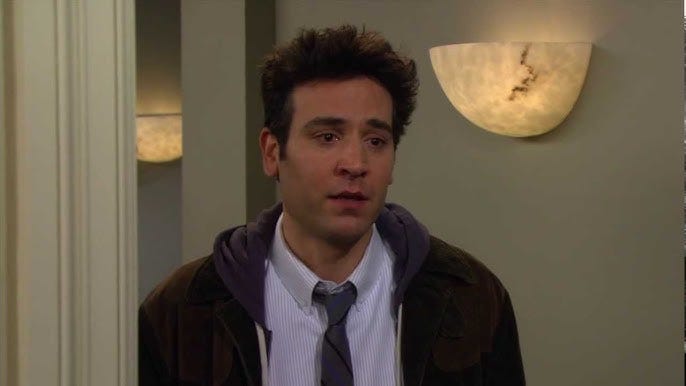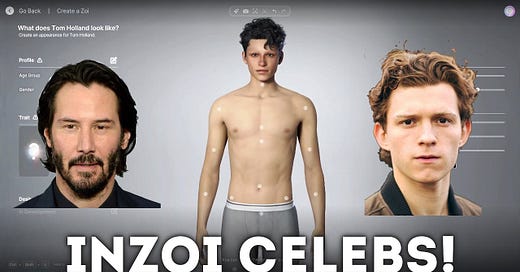This week’s post is by roommate Michael Mann Facts. Consider this a far more measured evaluation than most about certain “people” “taking over” “the West Village.” I am not nearly as hard on posting and influencers as he is; while I agree that you can no longer be a critic and not an influencer, I don’t really think that’s that horrific of a development (which I wrote about a couple weeks ago). Yet, I do agree with his evaluations of recommendation culture, and especially writing about stuff you have no business writing about, taking money in industries you have no business being employed by. I think he highlights a dissonance very well between Substackian calls for some sort of utopian, intellectual culture to replace “posting,” and the things that are actually popular on Substack: written-word versions of 23-year-olds turning their flash on to film at Carbone. I’m excited to have him on the blog again, and would appreciate everyone subscribing to his.
-Clare
Early leaks have suggested that Grand Theft Auto VI’s state-sized map will allow players to enter 40-70% of structures. This is an increase from roughly 25% in GTA V on a map that’s a fraction of the new one’s purported size. Players are excited: this means more space to explore, more buildings to stake claim, more NPCs to bother. While details are still unclear on player customization capabilities, however—will it stop at cars and outfits, or will there be sliding scales to adjust eyebrow height and ear width?—another game has already begun to allow players to fully design themselves, or others, in virtual life.
InZOI is a new, Sims-esque game that allows players full immersion in a digital world replete with social media and cafes. While crypto influencers and manosphere gambling streamers are discussing the potential for an “economy based system” within GTA VI, InZOI players are already stressing about paying bills and making money quickly. As the Zynternet has overtaken culture via sports betting, popular video games are rapidly approaching full-scale digital economies based on the same thing: try to convince me that placing any prospect of future returns solely inside a video game is anything but gambling.

To do this is to become an NPC, i.e. to be excited about visiting a cafe within a video game, to delight in designing a home within a video game not meant solely for designing homes, to enter into a contract with a streamer to “make money” inside his video game server by “working.” Video games have always been a digital third place away from work and the traditional machinations of “home,” offering an escape from the dreary via an opportunity to easily connect with others. This purpose is eroding as developers and players alike seem excited at the prospect of also making video games work and home, manufacturing digital recreations of physical third spaces so that there is still somewhere to blow off steam, virtually.
In real life, the definition of “third place” has been churned through the algorithmic meat grinder, manipulated into meaning just any place where people will stand on line, hoping to gain access. The proliferation of the term comes at a time when you can no longer gain clout by recommending bars or restaurants, where you can get a walk-in at Via Carota on a Sunday night, a practice which itself has been turned into a new type of viral content. Third places have “vibes” and “people,” like a bar or a restaurant. But influencers who have made a living in the precarious TikTok economy need a new way to garner clicks and build engagement, transforming their restaurant-review-and-recommendation-brands into generic-place-identifier-pages.

This goes beyond short form video: there are now apps optimizing the sharing of “favorite places,” which exist to let users know that “third spaces are popping up all over New York” and that they’re “the 2025 version of speakeasies.” Right. “Instead of going to bars hidden behind refrigerator doors, everyone is going to cool, well-curated, and creative spaces.” You used to be able to go to bar to meet people, drink, and discuss art, politics, culture, etc.. Now, instead, you have to go to a well-curated and “creative” space, your presence signifying that you know about these things that people used to discuss, without having to actually discuss them. Curating recommendations for an online generation bifurcates natural groundswells of interesting places to be, interesting people to hang out with, interesting culture to participate in, viral or not.
There is too much at stake to go somewhere unfamiliar—to try something new—without someone else having recommended it to you (beyond the threat of a lack of TikTok views, a trip to any trendy bakery now costs $40). The recommender is not someone you know, necessarily. Like how a new, aestheticized Yelp can crop up in an instant, now you do not even have to toggle the play-speed on a 60-second video to know about “cultured” places. Usually, the people doing the recommending don’t have much overhead or experience in city living, entertainment, restauranteering, or writing cultural criticism, either. A metric they follow seems to be finding places with not too many reviews, but a high rating on Google maps, in practice translating to new restaurants that were recently rented out for any number of events: a fashion week dinner, a brand party with a Conde Nast guest list, or an influencer birthday party. As non-work, non-home places in New York City shift more towards curating “vibes,” the onus is thereby even less on influencers to actually discern. Someone else has already put the Lijadu Sisters on the playlist and told you that they’re kind of having a moment.

In January, a budding foodfluencer published a guide outlining the supposed “rise of third spaces” in New York City. The author seems frustrated that New York City has a lack of “third spaces.” “Is this a trend?” she asks, as if New York City has not always had third places, more than any other city in the country. “London is DOING something we’re not” she writes, accompanied by pictures of a wine bar that also serves ice cream. But, according to the Corner app’s Instagram, New York City already has a wine bar that also serves ice cream. The author seems unsure what a third place is supposed to be, loosely and distantly defining it as “something different than places you frequent on a weekly basis.” A few of her recommendations are a combination of drinking with an activity, i.e. Paint ‘N Pour for a new generation. But they have always already had that here, and they have that in Kansas City, too.
That post, which has gone viral by Substack standards, encapsulates the nouveau influencer attitude which has taken post-COVID NYC by storm. People went to state schools to party, but they watched influencers vlog in their free time. Influencers lived in New York and Los Angeles, but something about NYC felt more familiar: that’s where Ted Mosby, Carrie Bradshaw, and the Friends lived. When COVID hit, the dream of moving to New York City—to drink, like you do at state school—was suddenly within reach. So too was the dream of becoming an influencer: all that time with nothing to do but create content using an iPhone, no fancy equipment necessary. Remote jobs and decreased rental prices made living in NYC an easy sell versus Chicago, Boston, or some other city that also has bars. But those bars aren’t New York City bars, which is true: walking around “Wrigleyville” is not as much fun as bar-hopping on the Lower East Side or in Williamsburg. But now, drinking and partying isn’t as attractive in a wellness-addled social media environment. You must have an activity attached to your drinking in order to make it mature or worthwhile. Enter the corporate email job nine-to-five-working, Samba-wearing, Bottega-bag-carrying, Bernie’s-line-waiting third place definer.1

This behavior isn’t exclusive to women, either; men who follow Alex Delany on Instagram and listen to How Long Gone are just as culpable. It’s actually easier to pinpoint this emulative behavior from a man, because they have fewer cool people or influencers on which to model their lifestyle. If they aren’t spending all their money on sports betting, it’s going toward food and clothes that someone else told them they should buy. Ask yourself: who is Fran Lebowitz for straight guys?
This is especially true of already “famous” men, like all of the New York Yankees who think Don Angie and 4 Charles sound fire, or Fred Hechinger, who my girlfriend and I saw waiting for a table outside of East Village Thai hot spot Soothr, where every other 20-year-old in Sambas congregates 7 nights a week.2 Tastemakers used to be athletes and actors, but that cultural capital is now reserved for influencers and podcasters. Even Patrick Schwarzenegger, star of 2025’s hottest television show, wears podcast merch. Perhaps this homogeneity is due to lingering internalized homophobia—Is it gay to put on cool clothes to go to dinner?—but the more likely explanation is that in NYC, regardless of income, every man with a girlfriend wants to go to the same five restaurants. Be the influencer you want to see in the world.

But this isn’t worth personally fretting over. These people aren’t blowing up my favorite spots, which I’ve happily discussed before, both on my blog and with anyone who asks me in person. You moreso have to feel sorry for someone who feels the need to recommend “bars in New York that you can bring a book to,” as if that’s not an activity as old as time; or, a guy who insists that Our Legacy trousers are “totally worth it” and that “his boy” put him on to them. Just wear the pants. Sifting through a cultural landscape rife with unfulfilled money-havers is like watching Sims interact, though not entirely useless. For now, it’s a cautionary signal for what’s going on at the macro level, a warning shot above the spending-money-outside-your-house-bubble.
Influencer culture has been NPCified. You used to move to a place because you saw promise there that you could find your niche in its culture, whether partaking, observing, commentating, or some mix of all three. People like Nan Goldin, Graydon Carter, Keith Haring, even Keith McNally, were not from here, but moved here to make an indelible mark. Now, you move to a place because you see yourself standing on a line or recommending where to stand on a line. Even promising, talented “creators” are moving to New York City to create more places to stand on line within culinarily significant spaces which were famously a reprieve from other, longer lines. This is just how things are now. “But what if you write about your recommendations?” Well, I would never try to open a restaurant because I don’t have enough experience or institutional knowledge. Maybe you shouldn’t write cultural criticism in Simlish.

Drawing more attention to lines—I’ll call it “mainlining”—has now extended beyond twenty-somethings who post front-facing videos or write Substack posts. At the time of writing, the two most recent New York Times restaurant reviews are for Hellbender and Ha’s Snack Bar. Both received two stars—indicating “very good” on the NYT scale—and an “NYT Critic’s Pick” stamp, which means these places should indeed be mainlined by readers, as the critics themselves may likely return. Though I’d be skeptical of any place which has ties to the Radio Bakery and Rolo’s crew, however loose.
But critics, like the NYT’s Priya Krishna, are now no longer immune to mainlining. Of course, it’s their job to sniff out the places which will inevitably draw lines, née crowds. But perhaps that means to write up Ha’s when its owners were hosting pop-up dinners at Rolo’s two years ago, or Hellbender when it opened in February of last year, before either drew lines. The jig is up, Priya: we know you make front-facing videos, too. Now it seems like anyone who talks about anything in this city is mostly interchangeable, for better if you want to quickly build a platform (like playing a video game), or for worse if you actually are interested in consuming thoughtful recommendation or critique. And I’m not so sure people are.

Publishing your opinion has never been easier, but it’s also never been harder. There’s anxiety in putting your thoughts out there, spending $200 on a meal when you don’t have infinite money or meal comps or corporate cards like influencers and professional food critics might. Perhaps that’s why young people have shifted their attention to the nebulous “third spaces” of New York City. One drink, some dope wax on the turntables, two hours of your evening, and boom: it’s not a bar, or your house, so you should check it out. Trying a new, fully-formed, unrecommended place is too scary, too risky, especially in a city that is so vast. Though New York’s promise is exactly these multitudes it contains, the new metropolitan NPC cannot fathom a place where more than 25% of structures are enterable. It’s only a matter of time before someone recreates Substack on InZOI.
*Note from the editor (Clare): I’ve never been to Bernie’s, but I famously think it looks awesome. And Michael Mann Facts and I both like Sambas and Bottega, FWIW.
We are still huge fans of Fred.






Apologies in advance that I didn’t interview any “West Village Girls” for this…
I agree with so much of this. When I was reading about this I kept thinking about the 'pop-up' bars that were a big thing in the 2010s (at least in Chicago), where some brewery would turn their place into 'Stranger Things' or Winterfell or whatever. It's kind of cringe now but it does feel like a lost time. Of course it was totally designed for social media consumption, but it still had some of the remnant funs of 90s/early 2000s hyper maximalist restaurant theming. I miss that, but also I'm a ~90s kid~, and I want to have a disgusting 'Ice and Fire' themed cocktail while wearing a Jon Snow cape in 90 degree humidity.
Wrigleyville does suck, and it probably is worse than bar-hopping in LES or whatever, but it does serve an essential function: it essentially gathers all of the worst drinking people imaginable and puts them in one spot, and lets all of the normal people frolic in the other neighborhoods. The only people I know who are 'into' Wrigleyville are Indiana frat bros, Barstool wannabes, and the most insane MAGA chicks imaginable. But also, whenever people I strongly dislike go to Chicago, I love recommending that they check out Wrigleyville, especially after a game :)